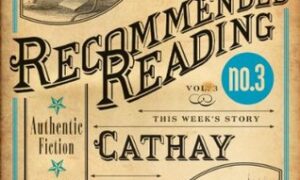 Dress Codes for Small Towns by Courtney C. Stevens
Dress Codes for Small Towns by Courtney C. Stevens
My rating: 3/5 cats



Otters Holt by night was all ghost, no town.
this is a goofy and sweet book with commendable intentions and an appealingly big-hearted energy. what makes it stand out from most YA offerings is that it is set in a small christian town in kentucky and features a central character whose bisexual explorations coexist with her religious beliefs.
this is ultra-refreshing to me.
not that i hail from a particularly bible-thumping region – i was raised roman catholic, confirmed and everything, but in my family it was more of a social rite of passage than anything else. is there such a thing as secular christians, or is that something like dreidels and the birthright to control the media that only jews get to have? i’m KEEEEDING – i can totally get my hands on a dreidel if i want one. but so even though i never felt imposed-upon by religion in my own sexual development, i know that others struggled with the whole faith vs. sexuality situation, particularly when their attractions were other-than-hetero, so i appreciate that this book exists to show that you don’t have to “pray the gay away,” you can pray and also be gay (or at least bi-curious) without shame and anxiety.
this is a high-three stars cats, but even though i didn’t love this book for the reader that is me, i love that this book exists for the people it’s meant for. there’s nothing wrong with it, other than it being full of teenagers talking like teenagers, which gives me a twinge of pleasantly embarrassed nostalgia, but doesn’t stick to my readerly ribs. on the one hand, games like THINGS TO DO WITH A CHURCH MICROWAVE are pretty fun:
Woods and I turn our attention to step four, which is seeing How Many Peeps Is Too Many Peeps? The answer: more than forty. It’s messy and delightful.
on the other hand, there are some eyerolly moments, mostly related to a self-important, tribalistic impulse to define through in-jokes:
The year I was seventeen, I had five best friends—a Pixie, a president, a pretender, a puker, and a douchebag—and I was in love with all of them for different reasons.
you know who can pull shit like that off? john hughes. end of list.
this involves six friends who, once again demonstrating that addiction-to-labeling, are known amongst themselves as the hexagon: billie, the preacher’s daughter and center of the story, although not the only POV, janie lee (pixie), woods (president), davey (pretender), mash (puker), and fifty (douchebag). mash and fifty barely factor into the story, although there are practical storytelling reasons for both to exist.
for the most part, they are good wholesome teens – they go to church AND sunday school AND youth group, they have strong, loyal friendships and care about preserving the traditions of their town and prayer and doing good deeds, but there’s a decent amount of drinking, cussing, kissing, and light arson to keep them interesting. they have vowed to keep things platonic within the hexagon’s boundaries, although it’s revealed that there has been some secret smooching here and there in the past, and the main conflict of the book is billie’s frustratingly simultaneous-and-equally-intense attraction to both woods and janie lee, who are currently attracted to each other.
so it’s complicated.
this does a really good job nailing down that fuzzy-bordered place between platonic love and hormone-addled curiosity, where everyone is possible and you just wanna kiss ‘em all in an overabundance of energy and love, heedless of consequences, where it’s all innocent puppy piles and handholding and midnight meet-ups and snuggling without expectations, where billie can …wonder at the difference between interest and attraction and wrestle with whether she likes girls or boys, or if the dilemma is more precisely about individual attraction rather than gender attraction – a choice between janie lee or woods – and weighing out all the different kinds of love and what they mean.
He says, “I think there’s a place where love equals history and a place where love equals the future and a place where love is just love and it doesn’t go away no matter whether you get it back or not. Figuring out the difference —“
“Is impossible,” I finish.
my only gripe, besides the probably really accurate teen-ness of it, is that they’re a little too old to pretend to be this naive. they’re seventeen, and if you’re already shaving, driving, and using a fake ID to get beer, as they are, it’s unlikely that you can hide behind the veneer of platonic affection, characterizing yourselves as “a pack of sexually innocent puppies” with all the tackling and wrestling and cuddling, disregarding any reasonable ulterior motives. although it is true that self-delusion is a big part of adolescence, and one secondary female character exemplifies this by making out with whomever she pleases, claiming ”I don’t kiss everyone. I kiss the people who have the little pieces of my soul I’ve been looking for” which is just dramatically romanticizing what is a really common practice by girls coming into their sexual power, and ties into the central theme of experimentation holding this book together.
the word “experimentation” often gets a bad rap when it’s applied to homosexual hookups in YA lit, something about being dismissive to homosexuality by reducing it to a temporary whim. i personally find this stance maddening and very stupid because adolescence is wall-to-wall experimentation – it’s trying shit out to see if it works for you and how you feel about yourself, whether it’s cliques and personal appearance, dabbling in drinking and drugs, or kissing girls and boys to figure out which gives you the best shivers. if you try it out and it turns out you’re gay, good for you! if it turns out you’re straight, equally good for you! if it turns out you’re neither or both or some brand-new combination of possibilities, experimentation is how you develop into yourself, and it’s a perfectly useful process and a perfectly accurate word and i see people getting all riled up when they read a YA book where a character has a homosexual experience but ends up in a heterosexual relationship at the end as though it’s some kind of betrayal or judgment instead of a thing that happens all the time as teens enjoy their young pretty selves. as davey states:
”Billie, this shit is murky and personal. You had to be able to explore.”
it IS murky and personal, and this book brought all of it back to me in a powerful way. in fact, all of adolescence is pretty much summed up in this one scene:
We’re jumping to the words “I can’t be contained.”
In the middle of everyone else leaping and screaming, I stand completely still and fully embrace the eye of the cosplay hurricane. The power of so many people doing the same thing rushes through my veins like blood. From the costumes to the dancing, we’re caught up in the same palm of an invisible hand.
I am dressed as a boy, I have kissed a girl, I have met people outside my usual web. No one cares. I am hidden. I am perfectly transparent.
This is it. This is living.
that frothy epicenter of complete conformity and complete individuality, sweaty and happy and feeling like all the secrets of the universe have just been revealed.
i’m glad i read this book, and i definitely think it’s an important and uncommon perspective in YA lit to advocate being true to yourself while still being a person of faith.
and just as an FYI from a readers’ advisory perspective – a number of reviews on here claim that billie is genderfluid, and unless my copy is missing a bunch of pages, that isn’t accurate. being a tomboy, being mistaken for a boy, being butch or being called a dyke, being maybe-bisexual isn’t the same thing as being genderfluid, and the synopsis-description of billie as a box-defying dynamo is referring to a totally different kind of box. and i know this makes me sound like an asshole, but it’s an important correction to make for people who are looking for books about genderfluidity and might be misled. here, a boy wears eyeliner and a girl wears a tie, but there’s no indication that it’s in response to gender identity.







